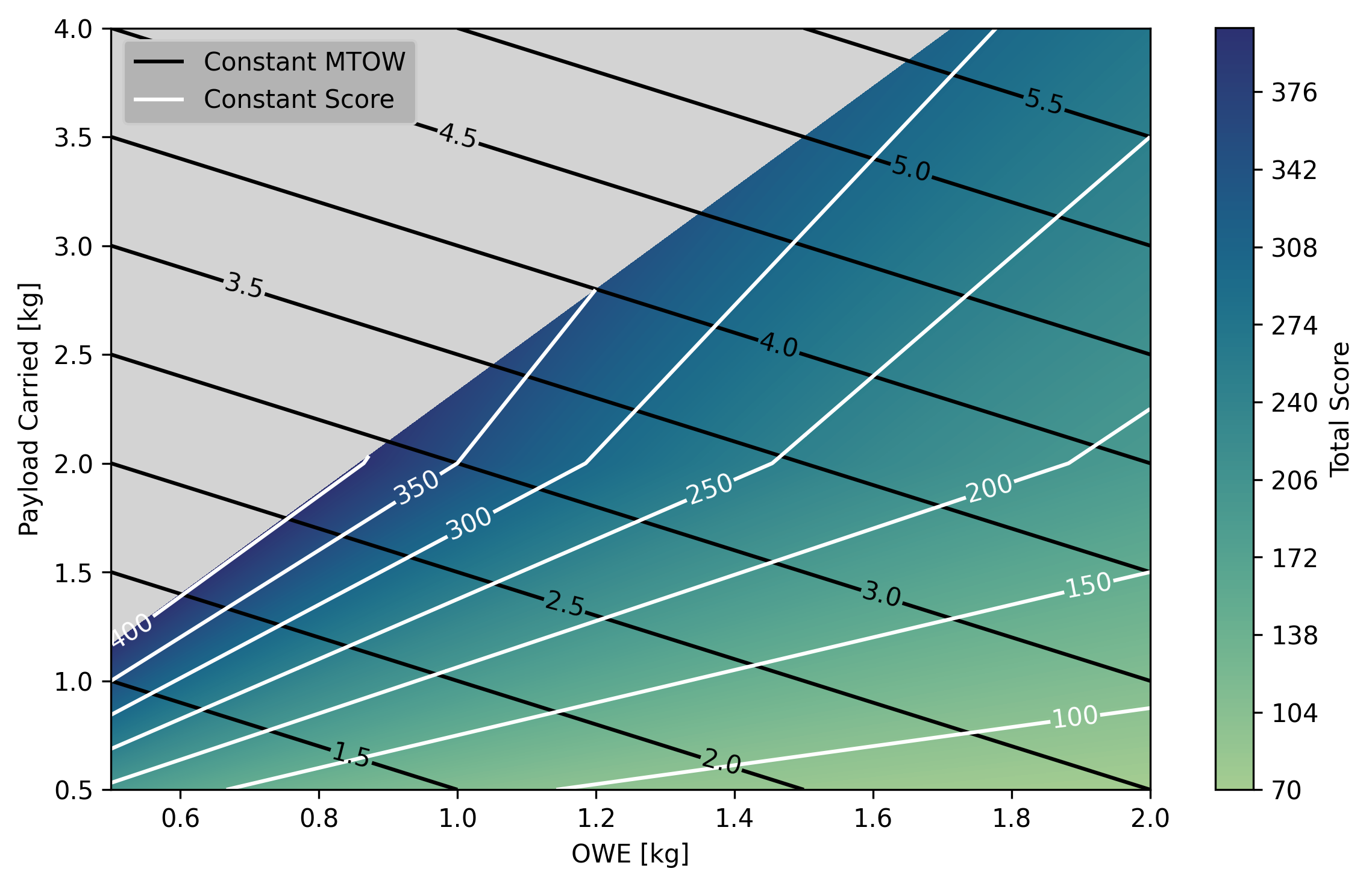Mission Objectives
On the day of the competition there are three flights, each consisting of two circuits with a single 360-degree banked turn. The first flight demonstrates the manoeuvrability and control of the aircraft, whilst the subsequent two flights require the aircraft to carry a liquid payload of up to 2 kg and 4 kg respectively. The primary objective for this competition is to carry these two liquid payloads and maximise the ratio between aircraft payload and empty aircraft mass [BMFA, 2021].
The liquid payload will need a water-tight receptacle that can carry a maximum of 4 kg [BMFA, 2021]. This will be the main challenge that will need to be overcome by carefully considering the method of water containment, as well as the weight of the liquid receptacle. Empty payload receptacles cannot weigh more than 10% of the carried liquid payload, which ultimately limits the number of practical types of receptacles that can be used for this mission. Another design hurdle to overcome, will be maintaining the centre of gravity (CG) of the aircraft for each flight round. The aircraft CG will be dependant on the distribution of the load, where the payload must be strategically placed in order for the CG to be located in the range most ideal for longitudinal stability [FAA, 2016]. Also with respect to this particular challenge, only the specified battery and motor can be used; a single 4-Max PO-3541-1070 motor and 4MESC50A speed controller and a 3 cell lithium polymer battery of 2200mA h. Modifications to either the battery or motor are also not permitted [BMFA, 2021].
Scoring Analysis#
Figure 1 shows a scoring relationship between possible OWE values and the achievable scores with different payload values. The total score, assuming the successful completion of all three rounds, can be found as described in the Flight Challenge 5 Weight Rules 2022 as
The range of achievable scores is dictated by the structural efficiency that could be expected of the aircraft. Previous BMFA competition results [BMFA, 2019] were used to compute a structural efficiency for aircraft looking to maximise Payload/OWE; as is the case for this mission. This resulted in a reasonable structural efficiency target value of 0:7. Results are therefore unachievable when the combination of OWE and Payload exceed the calculated MTOW.

Looking at figure 1 for this efficiency, it suggests that the maximum score is approximately 400 which is achieved at an OWE of approximately 0.8 kg carrying a payload of 2 kg in both payloadcarrying flights. Existing aircraft outside of the BMFA competitions however, have seen structural efficiencies as high as 79% and so it could be possible to have a final score much greater. The figure could also be useful during the design phase. If at some stage during design it is calculated that the aircraft will not support a 4 kg payload without reinforcement, figure 1 could be used to determine whether it is better to fly at it’s current design weight with a reduced payload, than carry 4 kg but require additional weight in reinforcement, increasing OWE.